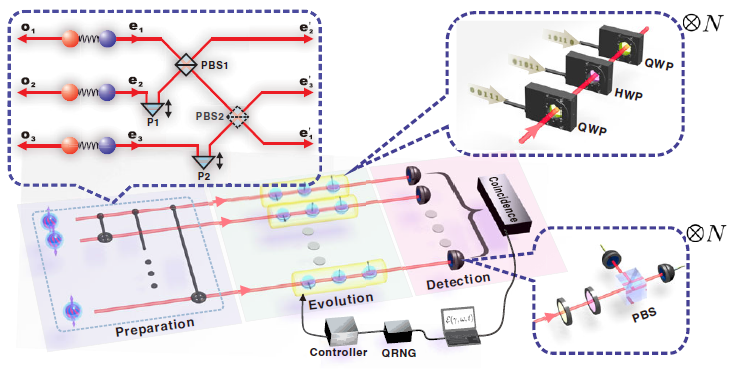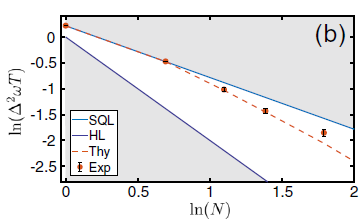Researchers Reveal the Importance of Passive Control in Noisy Quantum Hardware
Quantum systems can be exploited for disruptive technologies but in practice, quantum features are fragile due to noisy environments. The process of “decoherence” stands as one of the major obstacles in realizing scalablequantum technologies.
Quantum coherence is a crucial resource for quantum information processing, which is a basis-dependent property that is known to exhibit resilience to certain types of Markovian noise. Yet, it is still unclear whether this resilience can be relevant in practical tasks.
Recently, the team led by Prof. GUO Guangcan from the University of Science and Technology of China of the Chinese Academy of Sciences first demonstrated the resilient effect of optical quantum coherence to transversal noise, and further verified that the measurement precision of entangled Greenberger-Horne-Zeilinger (GHZ) state probes in transverse noise can still beat the standard quantum limit. The study was published iin Physical Review Letters on November 1st, 2019.
In the study, they investigated the resilient effect of quantum coherence and metrology against transversal noise (the noise is concentrated along a direction perpendicular to signal).
The team first demonstrated the frozen quantum coherence in a four-photon GHZ state when subject to transversal noise. They also observed that the quantum Fisher information of the evolved noisy GHZ state is also remain unchanged. This means the measurement precision will not decrease when using such a noisy GHZ state for parameter estimation.

The experimental setup (Image by Chao Zhang et al.)

The experimental results of the log-log plot of the mean-squared error. The results (red dots) are all sandwiched by the SQL and HL bounds, indicating an intermediate scaling. The red dashed line shows the theoretical predictions with ideal probes and channels. (Image by Chao Zhang et al.)
The team further considered a more realistic scenario in which the noise occurs simultaneously with the signal, the results showed that even subject to a noise strength of equal magnitude to the signal, the standard quantum limit (the limit of classical system can be achieved) can still be surpassed by using photonic GHZ states up to six-qubit, showing the superiority of the passive noise control scheme.
The experimental results also confirm that in the case of parallel noise, the entangled GHZ probe will not show any quantum advantage.
The researchers revealed the preservation of quantum coherence in a photonic GHZ state. They showed the resource power of such resilient quantum coherence by surpassing the standard quantum limit in a noisy quantum metrology task. This is a fundamental step towards anti-noise quantum sensing, bearing a profound impact on a broad range of scientific and industrial applications.
This work demonstrates the feasibility of passive noise control scheme, which is an important step toward anti-noise quantum metrology, and may help to design more efficient noise control schemes.
In particular, they demonstrate when the noise is concentrated along a direction perpendicular to the signal, a quantum-enhanced precision of parameter estimation can be achieved by using GHZ probes; while for a parallel configuration, no quantum advantage can be achieved.
Future perspectives can be to combine passive noise control schemes with active error correction in metrology, and finally construct efficient quantum metrology protocols in realistic, noisy settings. It would also be extremely attractive to find other applications which can harness the natural resilient effect of quantum resources against decoherence, especially in quantum computation.
Paper link:
https://journals.aps.org/prl/abstract/10.1103/PhysRevLett.123.180504
(Written by LI Xiaoxi, edited by LU Hongyu, USTC news center)

